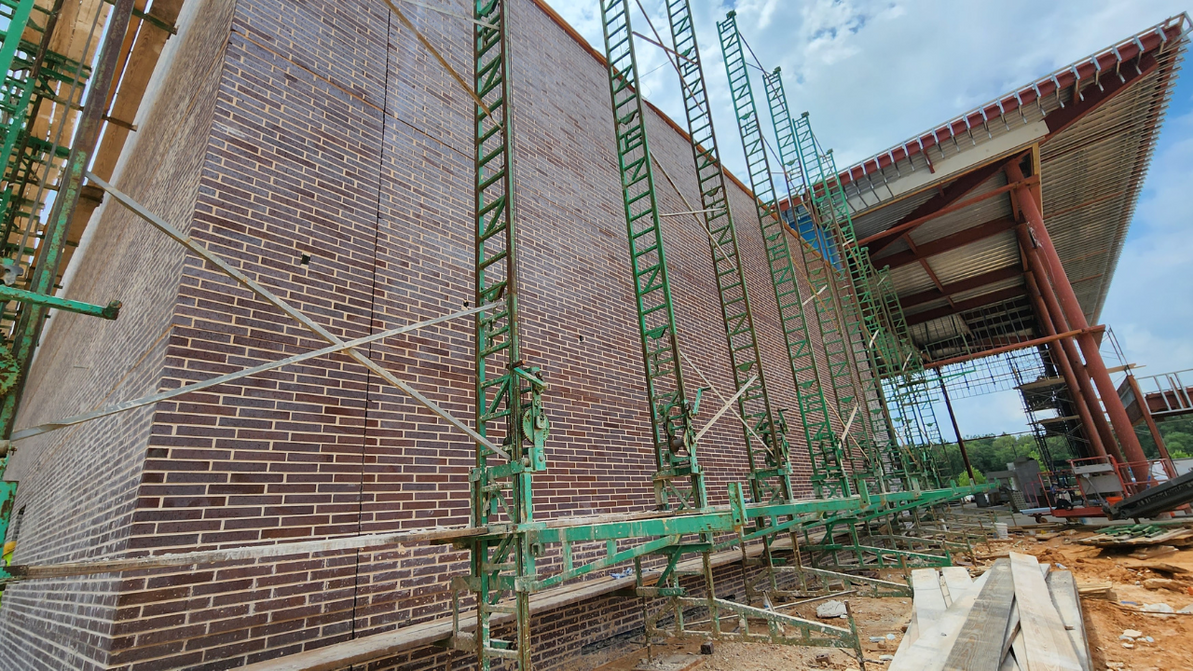The Basics of Scaffolding: What Every Construction Site Needs to Know
Scaffolding is an essential part of most construction projects, providing workers with a stable platform to perform tasks at height. Whether you're building a skyscraper, painting a house, or repairing a bridge, scaffolding ensures safety, productivity, and accessibility. However, not all scaffolding systems are created equal, and understanding the different types can help you choose the right solution for your project. Here’s an overview of the most common scaffolding types and when to use them.
1. Supported Scaffolding
Supported scaffolding is the most frequently used type on construction sites. It consists of platforms supported by poles, frames, and braces from the ground up. This type is extremely versatile, allowing it to be used on almost any site, whether for new construction or repairs.
When to use supported scaffolding:
- New building construction: Supported scaffolding is ideal for multi-level structures as it can be built as high as necessary.
- Long-term projects: Since it’s secured to the ground, this scaffolding provides a sturdy and reliable platform for extended periods.
- Heavy-duty work: It can handle significant weight, making it suitable for workers, tools, and materials.
2. Suspended Scaffolding
Suspended scaffolding hangs from an overhead structure, using ropes or chains to suspend a platform. It’s commonly seen in high-rise construction or maintenance tasks such as window cleaning.
When to use suspended scaffolding:
- Building maintenance and repairs: It’s perfect for accessing upper stories of a building without constructing a massive support structure.
- Limited ground space: If your project site is crowded, or if there's no room for a supported scaffold, suspended scaffolding can be a space-saving solution.
- High-rise window installation or cleaning: For projects that require work on the façade of a tall building, suspended scaffolding provides flexibility and access.
3. Mobile Scaffolding
Mobile scaffolding, also known as rolling scaffolding, features wheels or casters at the base, allowing the entire structure to be moved across the site without dismantling. It is typically used for projects that require frequent repositioning.
When to use mobile scaffolding:
- Short-term projects: Ideal for tasks that require access to multiple locations on a single level, such as painting, plastering, or electrical work.
- Indoor use: Mobile scaffolding is lightweight and easy to maneuver, making it a go-to for interior work where surfaces are level and smooth.
- Frequent repositioning: If you need to move the scaffolding several times in a day, mobile scaffolding will save time and labor.
4. Cantilever Scaffolding
Cantilever scaffolding, or needle scaffolding, is a specialized system where the platforms are supported by a series of needles anchored into the structure, rather than resting on the ground. This type of scaffolding is less common but very useful in specific situations.
When to use cantilever scaffolding:
- Limited ground access: If the ground beneath the work area is obstructed or unstable, cantilever scaffolding can be anchored directly to the building.
- High-rise construction: It’s often used in projects where you can’t erect scaffolding from the ground, such as on tall, narrow buildings or when working above ground obstacles.
5. Single and Double Scaffolding
Single scaffolding, often referred to as bricklayer’s scaffolding, is composed of a single row of standards. Double scaffolding, also known as mason’s scaffolding, is constructed with two rows of standards for added strength and support. The latter is commonly used when more weight needs to be supported.
When to use single scaffolding:
- Brickwork or lightweight construction tasks: Single scaffolding works well for smaller, lighter tasks that don’t require significant load-bearing capacity.
When to use double scaffolding:
- Heavier construction projects: Double scaffolding provides additional support for heavier materials and workers, often used in stone masonry.
Choosing the right type of scaffolding for your project is critical for ensuring safety and efficiency. Supported scaffolding is ideal for ground-up construction, suspended scaffolding works best for high-rise tasks, and mobile scaffolding offers flexibility for projects requiring frequent movement. Cantilever and double scaffolding provide additional support in special situations, allowing you to tackle complex jobs with ease. By understanding when and where each type of scaffolding should be used, you can ensure that your project runs smoothly and safely from start to finish.
Recent Posts
-
Why Scaffolding Continues to Rank Among OSHA’s Top Violations
Scaffolding has consistently landed on OSHA’s Top 10 Most Frequently Cited Violations list for at le …Dec 23rd 2025 -
Scaffolding Rental vs. Turnkey Scaffolding Services: What Contractors Should Know Before Deciding
When you’re planning a project that requires scaffolding, one of the first decisions you’ll face is …Dec 19th 2025 -
Why Hiring a Professional Scaffolding Company Matters
Scaffolding is one of those things that people often underestimate—until something goes wrong. On pa …Dec 17th 2025




